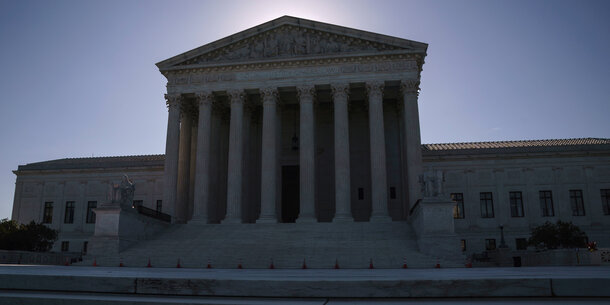Speculation about whether a Supreme Court justice will retire tends to pick up with the approach of the end of June, when the high court releases the last of its opinions for the term and begins its summer recess. The timing of a justice’s retirement from the Supreme Court can affect the law and people’s lives for decades. Because justices are appointed for life, they are empowered to decide when to leave the bench. The party of the president has become a predictor of the ideology of the justices they nominate, so justices who want like-minded successors have an incentive to retire when a president matching their views is in office.
But such strategically timed retirements run counter to the idea of justices impartially deciding cases based on the law, not their personal views. Congress could end these calculated retirements by establishing term limits for justices and limiting each president to two appointments per term.
The effects of Supreme Court appointments can be massive. The emergence of a conservative supermajority on the Court in 2021, for example, led to Dobbs v. Jackson Women’s Health Organization, where the Court took away the constitutional right to abortion by overturning Roe v. Wade.
Under the Constitution, federal judges — including Supreme Court justices — hold office for life or until they choose to retire. This structure exists because judges are supposed to base their decisions on the law and Constitution, not the demands of voters or politicians. But with a lifetime appointment comes vast power, and as justices increasingly live into their 80s and beyond, that power is lasting longer than ever, especially when compared to the 18th century.
Put simply, a strategically timed retirement allows a justice to exert control over the future of the Court — or at least create the perception they are doing so. With respect to Supreme Court nominations, the president’s political party is an increasingly strong predictor of a justice’s ideology. The party in control of the Senate is also relevant to whether a nominee is likely to be confirmed. A strategic retirement lets a justice plan the timing of their departure so that an agreeable jurist is likely to take their place, generally by taking into account the party of the president who will nominate their replacement and the party in control of the Senate that will vote on the nominee.
Strategic retirements are not unique to judges of one particular ideology or even to justices of the Supreme Court. The last time a Supreme Court justice retired when a vacancy was likely to result in the appointment of a justice with an opposing ideology was over 30 years ago, when Justice Thurgood Marshall stepped down due to declining health during the presidency of George H. W. Bush. Marshall was replaced on the Court by Justice Clarence Thomas.
On the lower federal courts, scholars have found that since President Ronald Reagan’s election, judges appointed by Democrats have been more likely to retire strategically. However, they also found that the most conservative judges also tend to retire strategically, while moderates appointed by Republicans have delayed retirement under presidents they perceive as too conservative.
Strategic retirements allow judges to effectively choose their successors, or at least their successors’ judicial philosophies, thereby extending their influence on the Supreme Court. This in turn reinforces a belief that the Court is a political body where justices do the bidding of the politicians and interests that supported their appointment — or forward their own personal political agenda. It undermines the principle that the rule of law controls the future of American jurisprudence.
Strategic retirements can also be used to give an individual president a heavy hand in the future of the Court, since the number of justices a president will nominate is left to either chance or retirements. Some presidents, such as Donald Trump and Reagan, have had multiple Supreme Court picks, while Jimmy Carter did not appoint a single one.
Because the Court’s legitimacy depends in part on public confidence that it is deciding cases based on the law and constitutional values, not on its members’ political preferences, addressing the harm of strategic retirements is vital. Trust in the Supreme Court continues to sink to near record lows. Among the contributing factors are political polarization among members of the public, a stream of ethics scandals involving the justices, scorched-earth confirmation battles, and decisions that are perceived as delivering victories to the party that supported a confirmation.
Also concerning are perceptions of justices making deals with presidents over their successors. There were reports, for example, that during Trump’s first term and roughly a year before Justice Anthony Kennedy’s 2018 retirement, Kennedy had a secret meeting with Trump where he recommended the president consider one of his former clerks for the next vacancy. Other reporting found that the Trump White House “waged a quiet campaign” to persuade Kennedy to leave the bench, leading to his replacement by former Kennedy clerk Brett Kavanaugh.
There can also be public efforts to convince a justice to step down. For example, reporting tracked an “extraordinary year-long campaign” and “remarkably public push” to convince Justice Stephen Breyer to retire, which he eventually did, leading to the confirmation of his former clerk Ketanji Brown Jackson.
The decision not to retire can have its own consequences. When Justice Antonin Scalia died unexpectedly in February 2016, then–Senate Majority Leader Mitch McConnell announced less than an hour after Scalia’s death became public that the Senate would not consider any nominee by President Barack Obama, purporting to “let the people decide” after the presidential election that November. Obama’s nominee, DC Circuit Judge Merrick Garland, languished in the Senate without so much as a hearing, making the battle over who would fill the seat a focus of the 2016 race. Trump campaigned with lists of people he promised to nominate to the Supreme Court. He thrice made good on his word, naming Neil Gorsuch to replace Scalia, Kavanaugh to replace Kennedy, and Amy Coney Barret to replace Ruth Bader Ginsburg. (McConnell reversed his “let the people decide” standard when he rushed Barret through the confirmation process with a final vote about a week before the 2020 election.)
It doesn’t have to be this way. Congress has the power to address strategic retirements, including by passing a bill that would create terms limits and limit each president to two appointments per four-year presidential term. Members of Congress have introduced versions of this proposal in both the Senate and House in recent years, and the concept is supported by many constitutional scholars and retired state and federal judges, who sent a supportive letter to Congress in 2024. All of the states but Rhode Island limit judicial tenure on their high courts, as does every other major democracy in the world.
Under such a system — which could be implemented by statute and would not require a constitutional amendment — each justice would serve for one 18-year term of active service and then remain on the bench as a senior justice who can hear cases on the lower courts and sit in for absent justices when there is a recusal or illness. A similar system has long been in place for lower federal courts.
By pairing term limits with regularized appointments to the nine-justice bench, Americans would know that every president would nominate two justices to the Supreme Court every four years. If a justice dies or leaves the bench unexpectedly, the most recently elevated senior justice would temporarily fill the position until a scheduled vacancy arises.
Together, these reforms can protect fairness and reduce the public perception that decades-long control of the Supreme Court is based on when a justice leaves the bench, with no recourse for bringing predictability and stability to the confirmation process.






